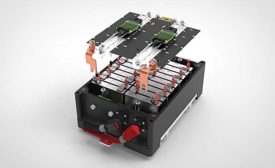Autonomous & Electric Mobility
Not since the early 20th century has the U.S. automotive industry seen so many startups
Read More
Building Better Batteries
Engineers are scrambling to perfect mass-production processes
August 5, 2019
Never miss the latest news and trends driving the manufacturing industry
Stay in the know on the latest assembly trends.
JOIN TODAY!Copyright ©2024. All Rights Reserved BNP Media.
Design, CMS, Hosting & Web Development :: ePublishing










